The vegie Q and A: Hetty Lui McKinnon answers your vegetable cooking questions
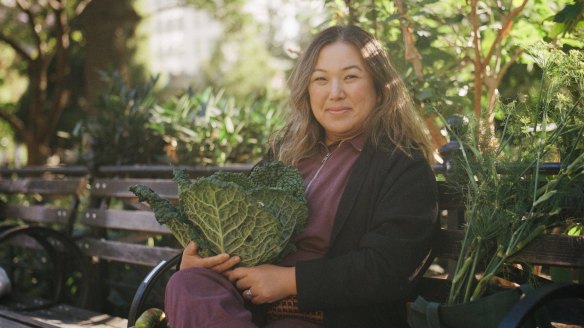
Don't know whether to salt eggplant or how to boost the flavour of your vegetable dishes? Hetty Lui McKinnon comes to the rescue as she launches her new cookbook.
Hetty Lui McKinnon is a great in the world of vegetarian cooking. Her path to vegetable-based fame began on the back of a bike, when in 2011 she established Arthur Street Kitchen from her home in Sydney, where she delivered homemade salads to locals.
Her first book, Community, built a cult-like fan base and now 10 years later she releases her fourth book, Tenderheart. She shares recipes from her book exclusively with Good Food, and to celebrate the launch we opened our social media channels for readers to ask her questions. McKinnon has answered these below and via video.
"I have been vegetarian for over 25 years, but my food is not just for vegetarians. My plant-based recipes are truly egalitarian, for every person who enjoys a flavour-packed, vegetable-heavy dish. No labels required," McKinnon says.
She has lived with her family in New York for seven years and is a regular contributor to The New York Times, Good Food and Epicurious.
Reader questions answered
What's your favourite vegetable, your go-to that you most like to cook?
This is like asking me to choose my favourite child, an impossible question! The long answer to this question is that the 22 vegetables in Tenderheart are the ones I like to cook or crave the most. These are the vegetables I buy most often, that are most available to me in my local supermarkets or farmers' markets.
If you pushed me, the answer is broccoli, because it is the vegetable our family eats the most of. It is endlessly versatile, and is liked by everyone in the family. I love to roast it in the oven or char it for salads, toss it through pasta, slice it really finely and use it raw, blend it into a soup, and stir-fry it. Healthy harmony around the table is what all families crave, I think, and broccoli gives me that.
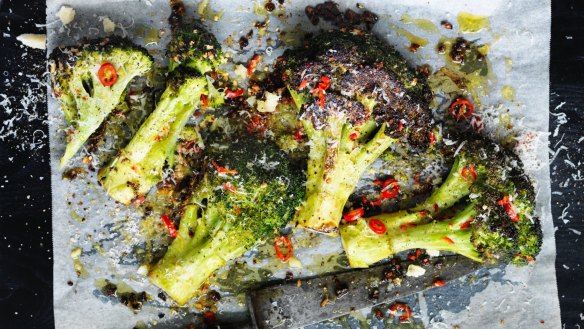
I am sick of boiling or steaming broccoli, what is a more interesting way to cook it?
I can't recommend roasting broccoli enough. Simply cut the florets off the stem, smear them with oil, a little salt and place in a roasting tray in a 200C oven for 15 to 20 minutes. This cooking method delivers caramelisation, which not only brings out the sweetness of broccoli, but also adds texture and smokiness.
If you do boil your broccoli, generously salting your cooking water makes a huge difference. You could even do as my mother does, and add a touch of sugar to your water.
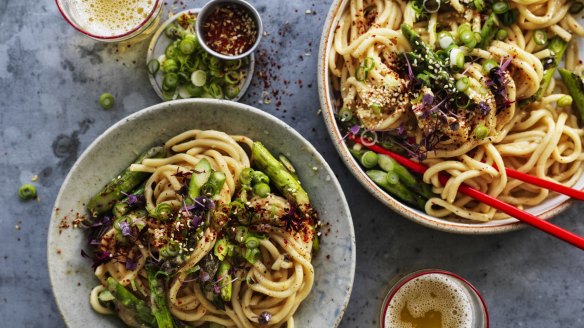
How do you drive flavour into the vegetarian versions of dishes that usually involve meat?
Vegetables are packed with not only flavour but also texture, and hence they are able to carry a dish as well as meat can.
When we think of food that is delicious, what we are usually thinking of is umami, the elusive fifth taste, that keeps us coming back for the next bite.
So, when we are cooking vegetarian food in general, and not just vegetarian "versions" of traditionally meat-based dishes, we must always think about the umami elements. Things like garlic, soy sauce, kimchi and tahini are obvious umami agents, but also consider fermented pastes and condiments like doubanjiang (chilli bean paste, try Lee Kum Kee brand from supermarkets), miso paste, doenjang (fermented soybean paste, also available at supermarkets) and dou si (Chinese fermented black soybeans) – all these ingredients deliver "fast flavour" and add a lot of complexity to dishes.
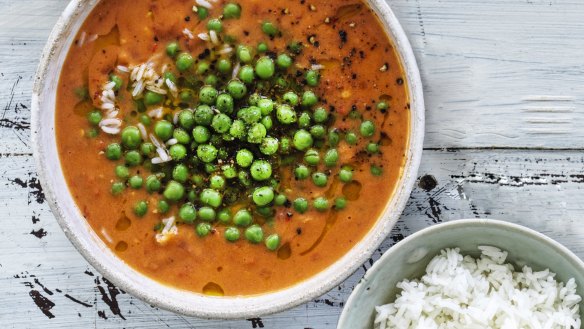
What do you rely on if the supermarket greens are routinely very sad-looking?
I am no stranger to supermarket greens. It is where I purchase most of my vegetables because it's what is most convenient to me.
I love English spinach, baby spinach or rocket. They keep well and if you want to extend their shelf life you can wrap them in a paper towel and store them in an airtight container.
Hardy greens like kale can be cooked down like spinach, so even if they aren't super fresh, they will still taste great.
If supermarket leaves fail you, opt for starchy veg like sweet potato, pumpkin or potato, as these will reliably keep for a long time if stored correctly.
Also, I'm going to make a case for frozen vegetables. Peas are the vegetable which I think is almost better frozen than fresh – cheaper, easier to use and more reliably sweet.
And they are quick to thaw and can be used in so many different ways. I like to mush them up with aromatics and spices and serve with any roasted veg, or add them to things like falafels to up the green factor.
Frozen corn or edamame are also excellent alternatives if the fresh stuff is not up to scratch.
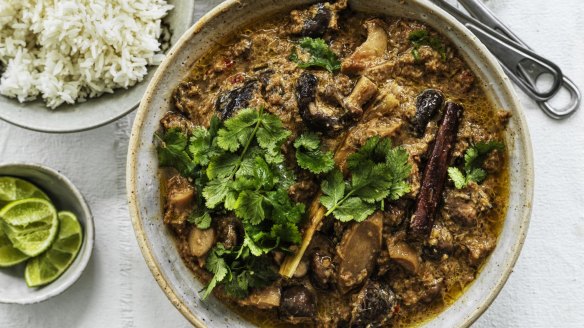
What do you think is the most versatile veg?
This is also a very tough question but I'm going to go with mushroom. They are not only versatile in the way they can be cooked, but they also move seamlessly across different cuisines – mushrooms are just as at home in an Italian pasta dish as they are in a Chinese stir-fry.
But I also love that they can be used as a flavour base; mushrooms are packed with umami, so adding a few to a soup broth adds incredible depth of flavour, or they can be caramelised and cooked for a long time to make a ragu that will rival bolognese, or they can be used in a more nuanced way to create a light broth for Asian-style noodles.
Along with fresh mushrooms, also think about keeping dried mushrooms in your pantry. I think they are actually essential. Chinese dried shiitake mushrooms will keep for a long time in an airtight jar, as will dried porcini or morels.
How can I make caramelised pumpkin without it going soggy?
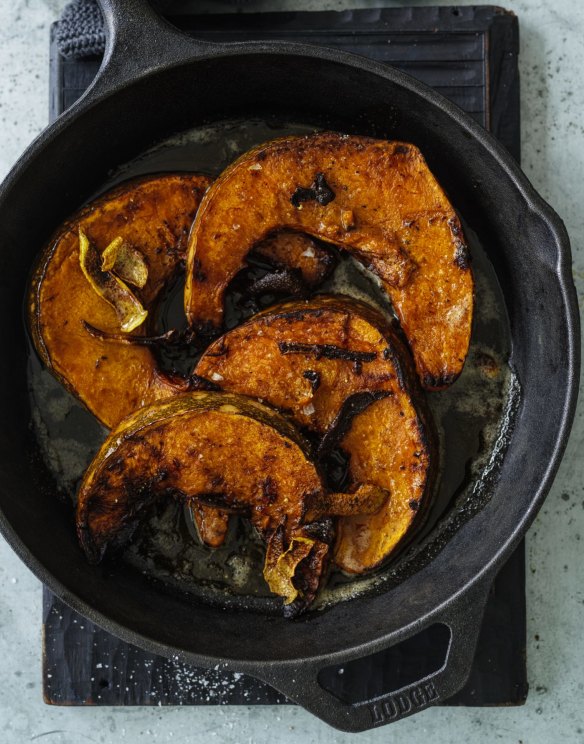
For me, it's high heat. I like to roast my pumpkin at 200C for about 40 minutes, which encourages the outside of the pumpkin to turn golden.
The other important thing to remember is not to crowd your baking tray. Set your pumpkin out in a single layer – if you pile them on top of one another, they will steam and get soggy.
And one more thing – use a baking tray with a low rim to encourage air flow. A high-rimmed baking dish stops heat from circulating around the pumpkin and you end up with soggy, sloppy pumpkin.
Which vegetables do you think are best eaten raw?
One of the most versatile things about vegetables is that you can prepare them in such different ways to achieve such different results. I particular love raw fennel. In fact, my kids only really eat it raw. When raw, its aniseed flavour is mild, and it has a lovely sweet juicy crunch which makes it so pleasing to eat. But there are many vegetables that shine when raw. Turnips and daikon are lovely sliced up really thinly and added to salads. I love crispy kale, but my kids actually prefer it raw and massaged with something citrusy.
Can you explain massaging kale?
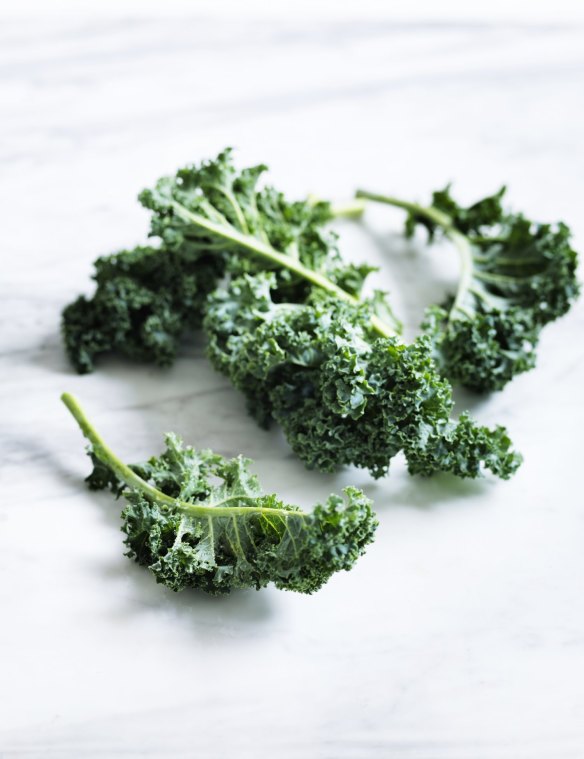
I'm going to be honest, lately I have been eating a bowl of massaged kale at least three times a week. It is the perfect base for a salad, particularly when the weather is warmer.
In massaging kale, what we are doing is softening it, because kale is a tough leaf, but this sturdiness is also what makes it so great in vegetarian cooking. It retains texture and body.
To massage kale, or any veg really, your two essential elements are salt and acid. These elements break down the fibres in the kale, softening them, making them more digestible.
In Tenderheart, I share my recipe for my favourite kale salad where the leaves are rubbed with citrus juice. The magic touch comes from avocado, which is squished into the leaves, leaving them creamy and tender. I use this avo-massaged salad as a base for hearty toppings such as tofu, chickpeas, soft-boiled eggs, quinoa – or you could even serve pan-fried dumplings on top with sesame oil, sesame seeds, garlic and acid.
Is there any way to reduce the heat of a particular chilli? I love habanero's taste but not its heat.
The heat in chillies comes from the pith, the veins and the seeds, so if you remove those three elements there will be less heat.
The other thing I recommend is rinsing the chillies in water first, which washes away some of the capsaicin, which is the substance that delivers the spice.
The third idea is to soak the chillies in acid or salt for 30-60 minutes (lemon juice or vinegar would work), which pickles the chillies slightly, amplifying the flavour but reducing the bite.
What are the five ingredients you'd recommend for a vegetarian pantry?
- Miso
- Tahini
- Tamari or soy sauce
- Fermented things like kimchi, pickles, sauerkraut, fu ru (fermented tofu)
- Chilli oil (see video above)
Do you need to salt eggplant to use it? Mine often tastes bitter.
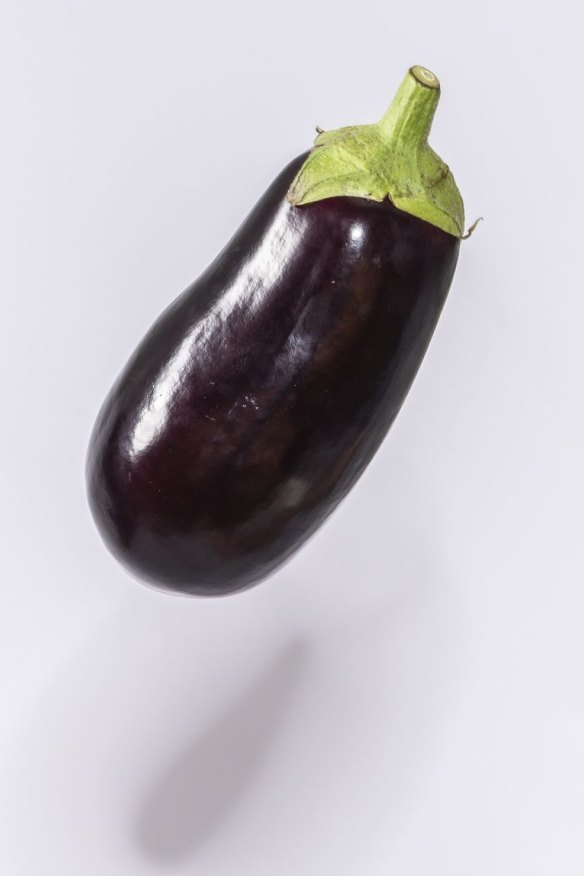
Traditionally, salting was recommended as a way to draw out bitterness, but modern domesticated eggplants are not overly bitter, so I usually skip this step. Eggplant is naturally sweet and earthy, with slight bitter notes. The bitterness is there but it shouldn't be overwhelming.
Instead of trying to defuse the bitterness, we should harness it and feed eggplant with big, bold flavours. Eggplant LOVES flavour and seasoning. Add spice, heat, acid, a big tomato-based sauce, or all of the above. I have an eggplant served with a char siu sauce in Tenderheart that will chase away any thoughts of bitterness.
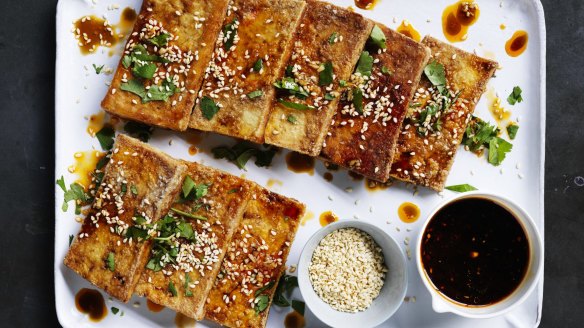
How can I get tempeh and tofu crispy?
I eat crispy tofu or tempeh almost nightly. To counter a lot of misconceptions about how we need to handle tofu, "pressing" it is just not necessary. I see a lot of recipes and cooks who believe that you can only get tofu crispy if you press all the water out of it either by sitting a heavy object on top or using a tofu press.
My mother didn't do any of that, so I don't either. And actually, pressing the tofu makes the interior dry so it lacks that bounciness that is so lovely when you bite into a piece of crispy tofu.
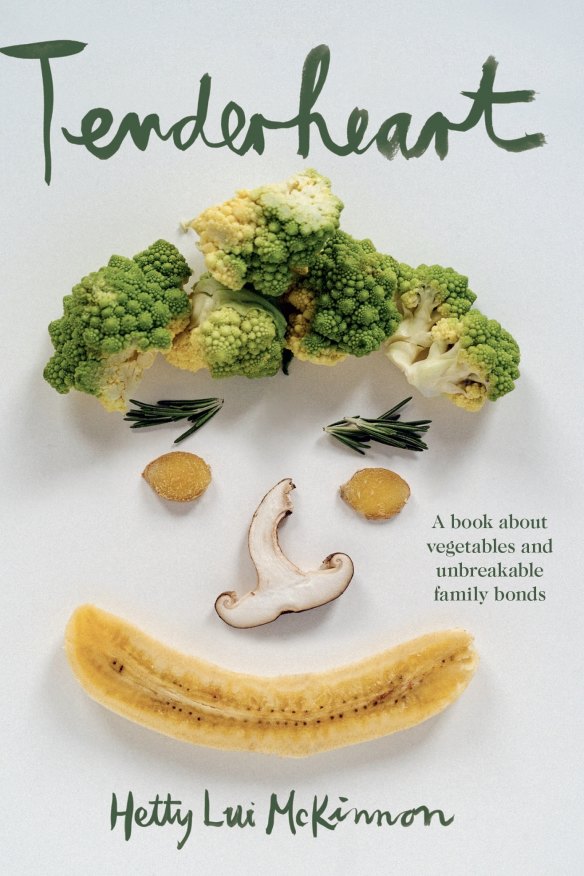
There are two ways to get crispy tofu and tempeh – the lazy way is to dry the tofu with kitchen towel or paper. Heat up a fry pan (either non-stick or cast iron) until it is very hot, add oil and fry on all sides until golden. A hot pan is the trick here.
The other way requires one extra step – dusting the tofu or tempeh in cornflour. But you could also use potato or tapioca starch. Place a good amount of cornflour on a tray, season it with salt and pepper if you like. Drain your tofu, and cut into cubes or slices. Now, add the tofu to the cornflour and turn to coat on all sides. You can either shallow fry this in a frypan or bake it at high heat, around 200C, turning as needed, and you will be surprised how crispy it becomes.
Tenderheart by Hetty Lui McKinnon, published by Plum, RRP $59.99
The best recipes from Australia's leading chefs straight to your inbox.
Sign up- More:
- How to
